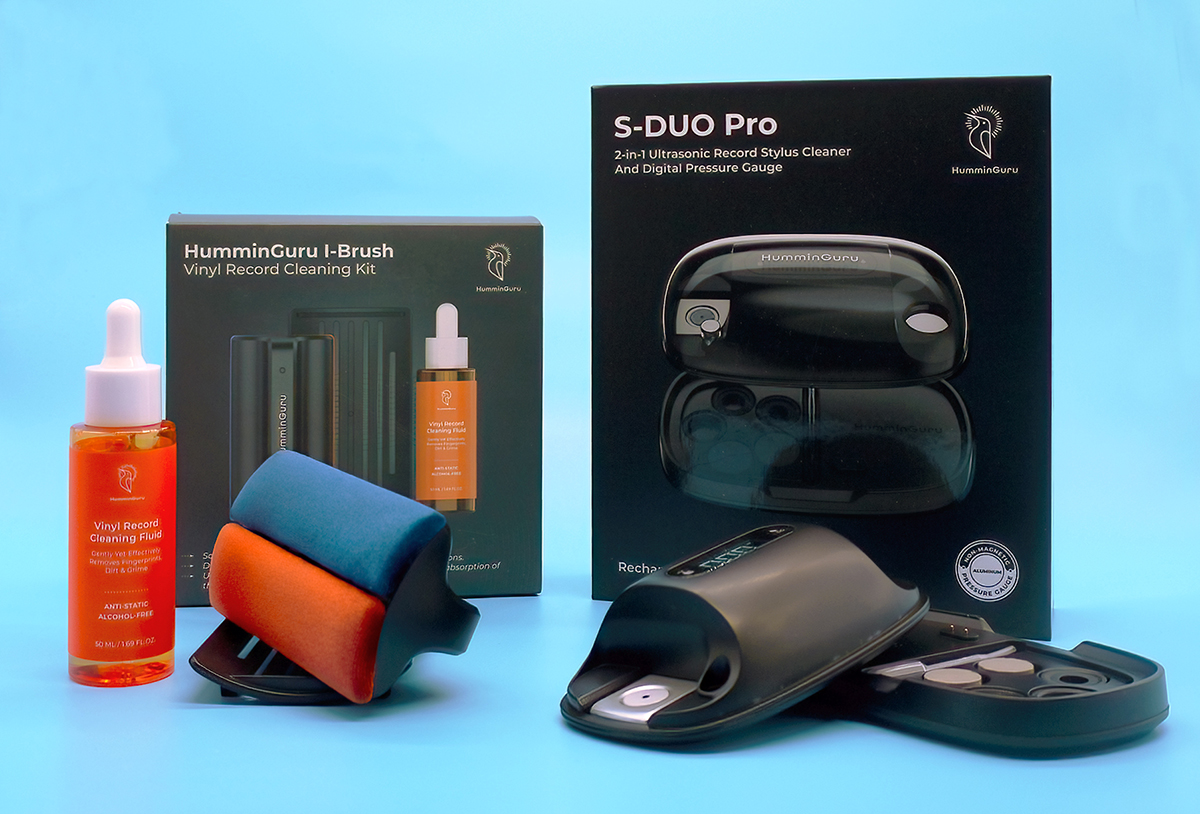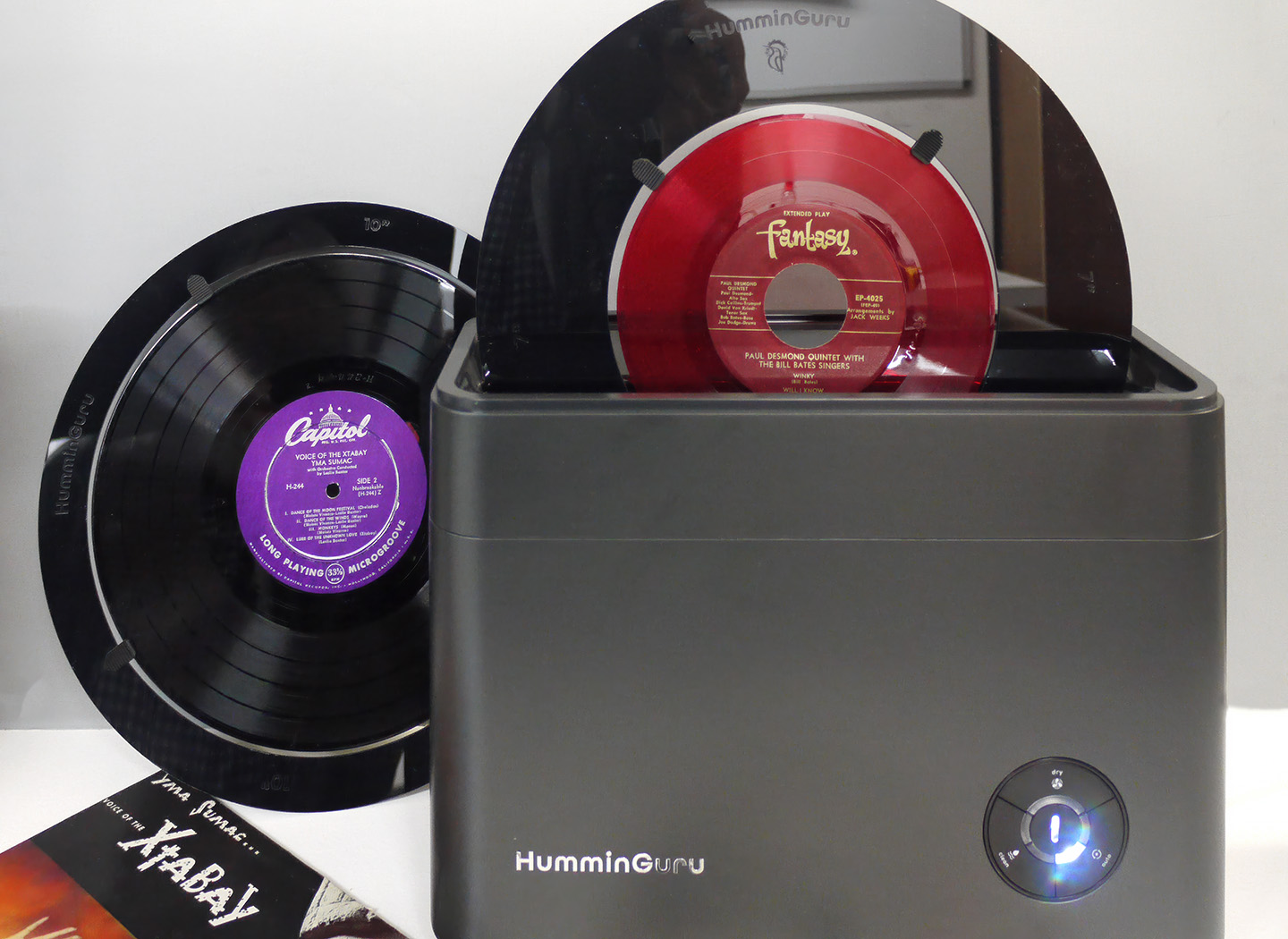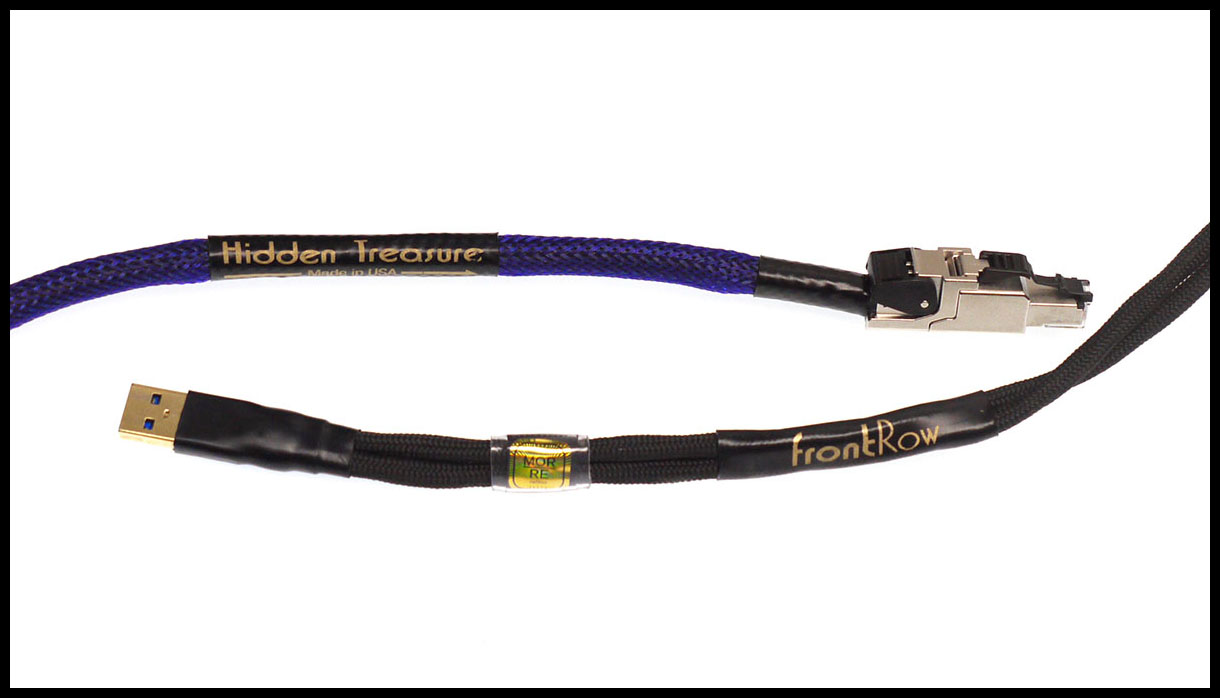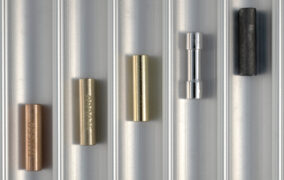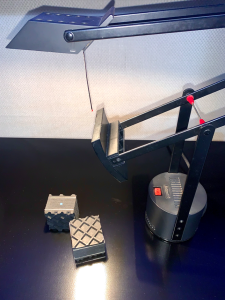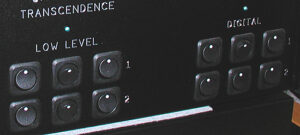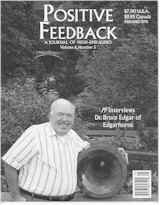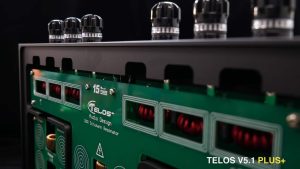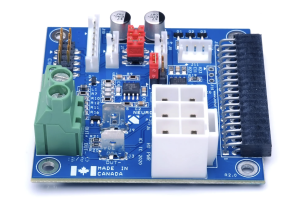
As an occasional contributor to this site, may I also mention that I "read" every issue of Positive-Feedback.com in more or less the same way I read the TAS and S'phile pulps. That is, not every word, but for the musings of certain personalities, and for others' commentary on topics, recordings, and equipment of personal interest. So it was that as I clicked through Andre Marc's survey of Symposium Acoustics' various products (HERE), it was his description of the Segue ISO shelf, Symposium's first product designed specifically for use under turntables, that made me hit the Bookmark tab. However, Andre seems to be one of those modern audiofellows surviving nicely without a turntable; he mentions the ISO only in passing as beneficial to his open reel tape decks. Then ensued some emails betwixt myself, Peter Bizlewicz of Symposium, and the editors, and the delivery of a Segue ISO for a follow-on review—so I'll try to minimize repeating what he had already commented on.
Yes, one of the classic symptoms of audiophilia nervosa is the notion that EVERYTHING AFFECTS THE SOUND, and thus needs "treatment". After cables, "isolation" products (spikes, cones, pucks, platforms, and the like) are the audiophile accessories most often associated with the syndrome by spouses and other skeptics. But there is science behind some audiotweaks, and the Symposium Acoustics website is exemplary in explaining their basic approach.
Which has very little to do with "isolation" in the dictionary sense. Their fundamental idea is to mechanically couple a vibrating or resonant object to a platform where the vibrations are dissipated rather than reflected back into the component, the equipment rack, or floor. Rollerblocks provide this grounding vertically while dissipating lateral energy as Sisyphean work on the micro level. As Andre Marc notes, this is very effective with CD players, amplifiers, and even speakers.
However, it is not a particularly effective approach for many turntables. Many of you know why, and can skip the next section.
And the music goes round and round…
Conceptually, the turntable's tasks are simple. 1. Rotate a disc at a steady rate. 2. Suspend a cartridge with minimal friction laterally and vertically, so that the downforce of the stylus in groove is but a couple grams. 3. Isolate the stylus/groove interface from external mechanical energy or vibration. Depending on what "steady" and "minimal" and "isolate" mean to you, that can cost anywhere between $100 and $100,000 or more—mainly because an insanely dedicated cadre of turntable and tonearm designers have wrestled with these requirements for decades. In general, task 1 concerns how the motor drives the platter: direct, idler wheel, or belt. Task 2 largely falls to the tonearm and cartridge. Task 3 belongs to the structure that connects or contains the working bits and sits on rack or shelf; in deference to the Brits, call it the plinth. (The turntable mat is also part of the equation, but that is an issue for another day).
Resist that image of a naked stylus heroically gliding down the spiral groove like a miniature Olympic luge racer. A phono cartridge is actually just an extremely sensitive vibration sensor. The passing groove wiggles are just vibration to the cartridge. But the turntable motor and bearing also generate vibration, as do all sorts of things in the surrounding environment (including the amplified music itself). Any such vibration reaching the stylus overlays the "pick-up" of the groove modulations (aka the Good Vibrations!) and is amplified along with the music, muddling complex passages, blurring transients, and reducing resolution. And you were wondering why Mikey always thinks $50,000+ turntables sound different…
Historically, turntable designers have dealt with the problem of isolating the stylus/groove contact in three ways: suspension, decoupling, and mass. My first audio Aha! moment occurred in my college years, at a Harvard Sq. stereo salon featuring KLH 9 electrostatics—but what caught my eye was the turntable hanging from the ceiling like a porch swing "for isolation" from the Red Line subway a block away. Not so surprising, then, that in 1961 Cambridge-based AR had invented the suspended sub-chassis turntable, the platter and tonearm hanging from springs, the motor fixed to the outer box, decoupled from the platter by a rubber drive belt. Soon Ariston, Linn, Thorens, Sota, VPI, and many others were adopting the idea. Rega, typically contrarian on principle, suspended the motor instead.
So why are there so few suspended-chassis turntables today? Well, besides manufacturing costs of complex systems, there were issues. First, any spring-based isolation system has a resonance point, and acts like a low-pass filter. Frequencies above resonance are blocked, below resonance frequencies are passed, and it is difficult to get the resonance point low enough to be effective in a compact enclosure—a real problem as the RIAA curve boosts low frequencies. In the USA, where frame house construction and sprung floors are common and folks love bass, even the suspended decks sometimes interacted poorly with footfalls and hearty partying. After a couple collapsed cantilevers, US audiophiles started adding mass to equipment racks—lead shot, sand boxes, concrete slabs on tennis balls, etc.
Second, while a belt drive de-couples the motor vibrations from the platter, the trade-offs were that the sub-chassis could move relative to the drive motor (affecting pitch stability). Ask any ex-Linnie about the joys of LP-12 set-up, getting "the bounce right", using the P-clip to stabilize the suspension, etc. (It has been suggested the Linn LP-12 was actually just a clever Scottish ploy to increase single malt consumption. Indeed, the plinth of the 40th Anniversary edition LP-12 of 2013 was made from oak distillery casks…). Third, the enclosing box plinth itself is a resonant structure. In the UK, where masonry construction was common and bass-limited mini-monitors were favored, the Linn/Rega mafia widely preferred the "light & rigid" $20 IKEA Lack coffee table to audio racks, as they "stored less energy" than heavy racks. (My Lack currently supports the laptop, remotes, and libation.)
The Linn's low-mass, sub-chassis in a box orthodoxy held sway against many challengers, like the skeletal Transcriptors of A Clockwork Orange fame and the Canadian Oracle Delphi, the way-outside-the-box thinking of the Well-Tempered, and the onslaught of Japanese direct drives. Then come the 1980s, and the CD, bless its blighted soul, changed the game. For all its obvious failings, Perfect Sound Forever also offered a legitimate critique of analog's weaknesses. Many turntable designers abandoned the Evangelikal Church of St. Ivor, and returned to mass.
As in high (or low) mass platters and even higher (or lower) mass plinths to control resonance. Of course, every thing has some degree of resonance, related to size and shape (i.e., a xylophone) and material (as compared to a marimba). Just as a solid body electric is less resonant than a hollow acoustic guitar, modern audiophile turntables tend to have solid plinths, but some are light (Rega, Funk, etc), some heavy (most VPIs, most high-end European decks). Some are skeletal, shaped or laminated; some are metal, acrylic, MDF, or some combination—all in an effort to control internal resonances. A few still use suspension (SME, Avid, SOTA), some use visco-elastic material like Sorbothane as footers, but many audiophile decks just use metal cones or similar and leave it to the user to provide a suitable stabile, non-resonant platform.
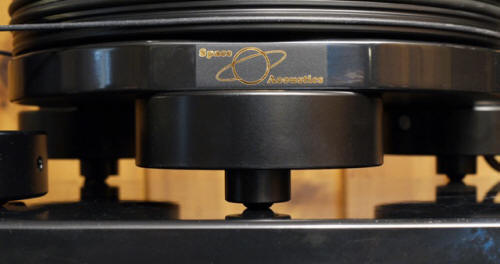
There is obviously no single best way to design or isolate a turntable, and thus there has existed for some time a niche market for turntable support structures. According to the usual authorities, the best approach remains the expensive active air-suspension devices such as the Kinetic Systems electron microscope platforms like the Vibraplane and sidekick ElpF (see Marshall Nack's review Issue 50) Audio-specific passive air-suspension platforms have also been available for years at lower price-points—the original Townshend Seismic Sink and the Gingko squash-ball platforms, for example. And naturally, folks have adapted various audiophile shelves and footers, including products from Symposium Acoustics, to turntable use, with mixed results.
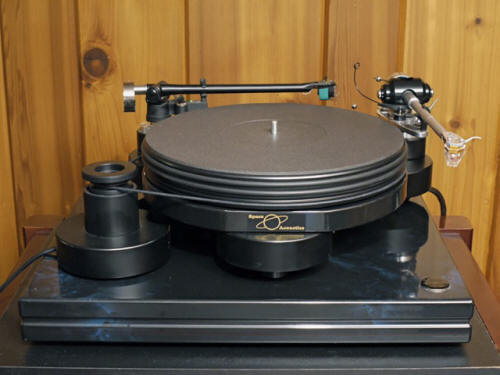
About a decade ago I acquired a used Nottingham Analogue Spacedeck, specifically because it could be set up with two arms (one for mono). It is a relatively massive (30+ LB), minimal plinth British design with a detached motor pod. No suspension per se, it sits on 3 height-adjustable footers, each with a small visco-elastic hemisphere on the bottom. The motor pod has 3 similar rubbery buttons. Unusually, the deck was factory-supplied with a dedicated platform to support the deck and motor; the platform has 4 more of the hemispheres. However, I preferred the results with a Townshend Seismic Sink to the stock platform, a set-up that worked well for several years. Alas, a year or so ago, the Sink developed a leaky air bladder. Alas, Townshend no longer supports the original model, having moved to air-damped springs on the current Sink. I was sunk. The stock platform was redeployed, but I have since been on the lookout for an alternative.
Enter the Symposium ISO
Symposium Acoustics makes several types of shelves that share a technology often termed constrained layer damping. That is, a laminated sandwich of different materials, arranged to first drain mechanical energy (i.e., vibration) from the component atop it, then pass the energy without reflection to a layer (or several) designed to absorb/dissipate the energy. Symposium refers to this as a bonded "stepped energy" construction. In the case of the ISO, the construction is partly obscured, but appears to be a thin aluminum top, perhaps mounted to something else, then a layer of open cell foam, then a bottom (MDF?) layer drilled out to partially recess the footers. Using the standard IEC Knucklerap test, the ISO is clearly "deader" than either the stock Nottingham platform or the all steel Townshend top plate, and way better than a plain MDF shelf. The shelf is stiff and not easily compressed despite the foam core. The Segue ISO apparently weighs about 15% more than the standard Segue, and has split rather than solid sides.
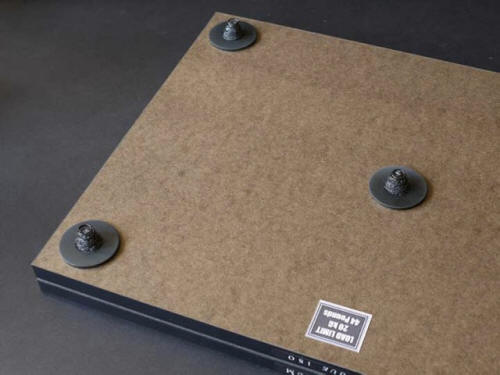
While other Symposium shelves are intended for use atop solid footers or Rollerblocks (to provide lateral "isolation"), the Segue ISO is equipped with 5 foam-damped stainless steel conical springs, 4 near the corners and one centered. The purpose of the foam is to damp the natural resonance of the springs, linearize behavior regardless of compression, and minimize lateral movement. The result Symposium calls a Linear Displacement Suspension System (LDSS), which serves to block low frequency vibrations from passing through the shelf from below and on to the turntable—although Symposium does not specify the lowest frequency blocked or the degree of attenuation by frequency. As noted above, turntables come in all sizes, shapes, and weights, and Symposium provides the Segue ISO in 4 standard sizes (+ custom sizes as well), and 2 weight categories: LD for up to 44lb, and MD up to 80lb. I received a 44 lb rated unit; at 19" x 14", it is the smallest stock size, and just 1" wider than the stock Nottingham platform. It retails for $349.
Rack 'em up, Spike
In an audioworld of increasing metal, mass and rigidity, my equipment rack is an out-of-production outlier. Acquired a while back from a fellow Positive Feedback contributor, the 5-shelf Zoethecus is, aside from cone footers and the fixing bolts, made of wood. Each shelf sits on small hardboard sub-shelves screwed to the corners of the support rails, atop small foam pads rather than the usual spikes or cones. It is, in essence, a lossy rather than rigid system. Zoethecus offered resonance-damping shelves roughly comparable to Symposium's as an upgrade from standard MDF, and uniquely, similar mini-shelves sized to match the sub-shelves so each footer of a standard-size component could be independently supported. I have one set of these under the PS Audio Power Plant AC regenerator on the bottom level. The other shelves are stock MDF, but here I must divulge one of my favorite tweaks.
Years ago, when I was shopping for a previous rack, the options were the ubiquitous black MDF and the more spouse-friendly plate glass. The IEC Knucklerap test revealed both to be quite resonant, albeit at very different frequencies. My solution was to go with MDF, but get ¼" plate glass from the local glazier to lay atop each shelf. Between the two I used a 1/16" layer of rubber foam kitchen shelf liner. The result is an impressively inert, stiff shelf. Peter Bizlewicz at Symposium seemed to find all this amusing, but I've used this homebrew constrained-layer damping trick ever since. However, to more accurately model conventional spike-coupled rack systems in this review, I fitted T-Nuts to the sub-shelves for the Zoethecus top shelf, with adjustable spikes for leveling, and removed the foam/glass sandwich.
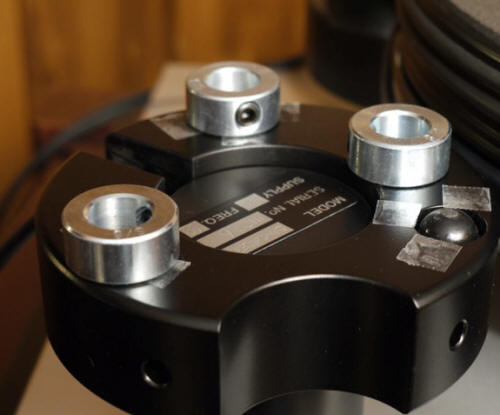
I also had to modify the turntable a bit—the compliant stock footers were quite contrary to the Symposium approach: they allowed both the table and particularly the motor pod to "wiggle" laterally and rotate slightly. My easy solution was a set of "shaft collars" from the hardware store (with a central bore and height larger than the rubbery buttons) used as spacers so the chassis and motor pod had direct metal/metal/metal contact with the platform. The turntable's weight secured its spacers, but a bit of double-stick tape was needed with the pod. No more wiggle.
Setup is quite straightforward. 1. Level the rack's top shelf and adjust the spikes so there is no wobble or "chatter". 2. Place the Segue ISO on the shelf, and then the turntable and pod atop it, avoiding any interference from tonearm or power cables by taping them to the rack. 3. Level the Segue ISO (as shown, I used a 2-way level from Home Depot) by positioning the turntable and pod. Because of the two tonearms and motor pod, the Spacedeck ended up somewhat forward and to the right of center, with the Segue ISO's footers compressed a bit over half their height. 4. Recheck and level the turntable. I used tape markers to keep the motor pod in a consistent location relative to the table itself for the trials. This made it possible to compare the sound of stock footers versus mechanically grounding the deck to the Segue ISO platform with a changeover time of about 30 seconds.
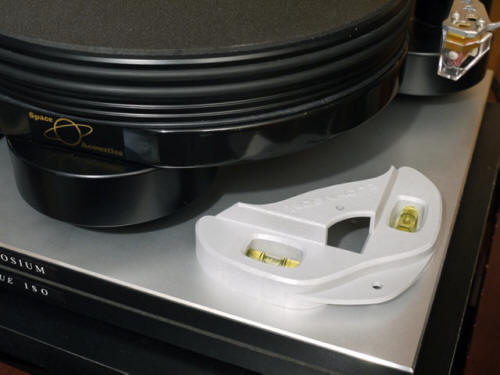
I over the review period, I listened to a wide variety of material, but several long-familiar LPs were of particular help. For bass clarity and transient response, the old direct to disc Sheffield Lab Drum Record has few peers. Wuorinen's Ringing Changes on Nonesuch for 3D spatial information, transient attack and decay. The 12 Cellists of the Berlin Phil on Telefunken for instrumental texture resolution. Cantate Domino from Proprius as Xmas approached to parse the parish choir. The Ronstadt/Parton/Harris Trio album, Ry Cooder's Jazz, the Classic Records Kind of Blue and some classical & jazz LPs I have used for so many equipment evaluations I pretty much know them by heart.
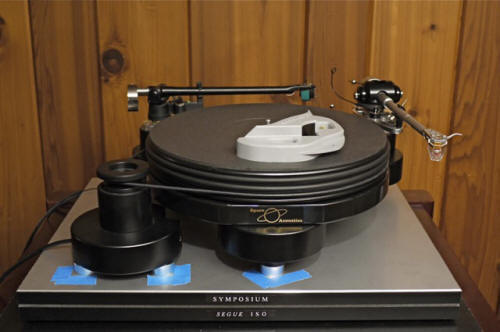
I made 24/96 dubs of select tracks of different configurations played at levels about 10 db higher than normal for initial comparisons. The Spacedeck with spacers directly on the undamped MDF shelf (i.e., analogous to generic metal cone footers) fared worst. It was easy to hear why the late Tom Fletcher, the Nottingham designer, employed the visco-elastic footers for isolation, and why he felt the expense of the sub-platform was justified by the increased isolation. However, upon replacing the stock platform with the Segue ISO, things got interesting. First, the Segue ISO proved superior to the stock platform in isolating the turntable from low frequency grunge—the Drum Record and the Cellists were noticeably tighter and cleaner, for example. Inserting the metal spacers particularly affected the spatial, dynamic, and resolution characteristics. The Spacedeck was not idly named, but the Segue ISO re-mapped the soundstage wider, higher, and deeper than ever before, be it the clang and rattle of the Wuorinen or the airy acoustic surrounding the Swedish choir and organ. The Segue ISO reveals that much of the criticism leveled at the Nottingham "sound"—a very slight tendency towards vagueness, blurred transients, muted dynamics—can be chalked up to the out-dated rubbery button footers. Simply put, the Segue ISO returns the once groundbreaking Nottingham Analogue design to contemporary high-end standards.
And then, I just listened to records. One example. The Rodrigo Concierto de Aranjuez presents problems in performance, recording, and reproduction: a solo classical guitar pitted against an orchestra is just plain nasty, and most modern recordings are heavy into multi-miking and spotlighting to compensate. Everyone knows the tune, perhaps from Miles's version, perhaps just from elevators; the guitar mostly plays off it. Something of an audiophile legend, the Yepes/Argenta version dates from the mid-'50s (Yepes premiered it in 1947). It is classic, simply miked early stereo, and earned a place on the late Harry Pearson's Super Disc list. A few days after he passed, I cued up a vintage copy (London CS 6046, FFSS Blueback) to check out the Spacedeck/Segue ISO combo. HP was a soundstage maven, so we can ignore the period microphone coloration and the non-audiophile vinyl. What's left is the soloist in the middle distance, and the orchestra arrayed in precise panorama beyond the listening room wall. This is an experience of listening in/to the recording, and thus into the performance, literally the back and forth between guitar and orchestra. You sense the hall, you follow the guitar line, supported by the way-back, often low-level winds and strings, even as you suddenly notice the almost inaudible squeak of fingers on frets, all simultaneously. On a recording over 50 years old. Gotta love that analog immersion rush.
The rest of the front end can share in the credit: The Lyra Delos cartridge, the Origin Live Illustrious II tonearm, the Kimber TAK-AG tonearm cable, the AQVOX 2 CI phonostage. The Miyajima Zero mono cartridge in the RB 250 second arm also sounds great with the Segue ISO, but as it is unaffected by vertical modulation (and is still breaking in), the stereo setup was used for evaluation. I did also run the Rega Planar 3 I use in my office on the Segue ISO—it is precisely the kind of "light but rigid" support Rega folk prefer —but it was also better still with rigid coupling (stacked spacers) than the lossy rubber stock feet. Plus, you can try 4 versus 3 footers in different locations…
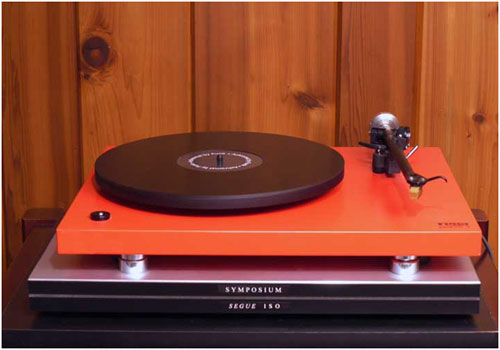
Which makes the Symposium Acoustics Segue ISO an easy recommendation for a wide range of turntables. For many vintage decks (like mine), it's a no-brainer, I'm buying the review sample. As a $349 upgrade, it should be well within the reach of owners of the many "entry High End" tables from Rega/Pro-Ject/Music Hall/VPI etc.—which typically have little or no effective isolation. Hold off on that new cartridge until you try one, pal. On the other hand, owners of "serious machines" in the $2-5K and up range should not hesitate to take one out for a spin—especially the MD version for decks over 44lb: there's no other economical option for the heavyweights. My one caveat would be for turntables with suspended sub-chassis or other sophisticated suspensions that cannot be easily bypassed. A suspension with two different spring resonances may not exactly work synergistically.
Otherwise, highly recommended. Even if you just have a tape deck. Bruce Kinch
Contact the manufacturer for pricing.
Symposium Acoustics
www.symposiumusa.com
[email protected]
973 616-4787





